Rosemary: Major Pests and Diseases
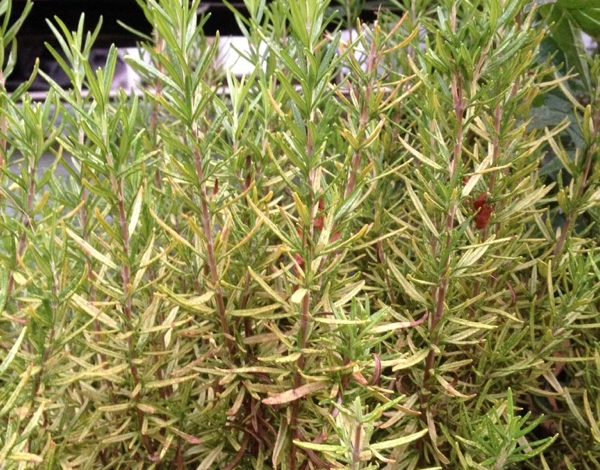
Hello farmers! If I tell you to think of an aromatic plant, rosemary will surely come to mind quickly. In today’s article, we will focus on identifying the most common pests and diseases of this plant and how to control them.
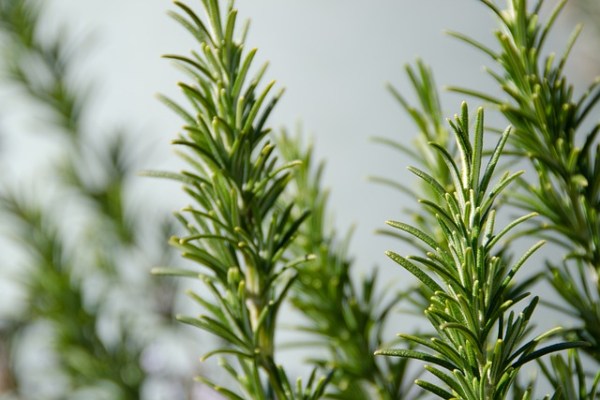
Rosemary: what is it for?
Its scientific name is Rosmarinus officinalis and its natural habitat is the Mediterranean region. It develops in any type of soil, preferably dry and somewhat sandy soils. As you know, it is bushy, woody and its leaves are perennial (they last on the plant all seasons of the year). Its flowers are purple, pink or white.
This aromatic plant is used in multiple situations. Among them stands out: rosemary tea, oils, alcohol, soaps, etc. Furthermore, like many other herbs and flowers in the garden, it is very useful because it attracts beneficial insects: pollinators (such as bees). The bees settle on the different flowers, depositing the pollen of some on the pistils of others, and making the fertilization that produces the growth of the fruits easier.
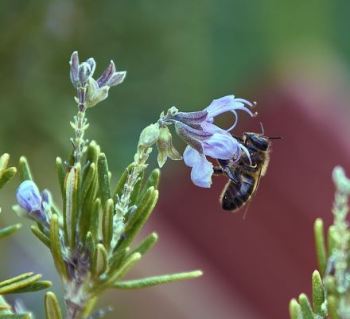
The truth is that it is a fairly resistant plant to pests and diseases. The most common are diseases caused by fungi. It is not convenient to water it a lot and excessively fertilized soils can also be harmful.
rosemary diseases
Rotten roots: Rhizoctonia spp.
The roots of the rosemary plant can be affected if they receive a lot of irrigation water. Therefore, the soils where we grow them must be permeable. Otherwise, the roots will rot.
It is a fungus that affects the roots and neck of the plant. The attacked areas show discoloration and later rot. Normally, young plants are the ones that present this type of disease. This is because they do not yet have well-formed tissues.
Black dots on rosemary leaves : Alternaria spp.
Again we are faced with another fungus. In this case, the symptoms appear on the leaves. If you observe in your rosemary, some black spots like the ones seen in the photo… the Alternaria is in your garden.
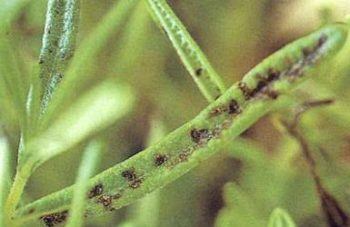
I leave you an article where we talk about how to prevent the appearance of fungi in the garden.
rosemary pests
This plant is not spared from the main outdoor pests, among which the following stand out:
White bugs on rosemary: Cochineal
Although it is not fully appreciated in the image, mealybugs can also appear. I remember that the males do not feed on plants and have wings. On the contrary, the females (which are the ones we see in our crops) are larviform, are devoid of wings and are permanently attached to the plants they parasitize.
There are many species of mealybugs, but the most dangerous is the ribbed mealybug. It can kill our plants in a short time because it reproduces very quickly and they feed by sucking the sap.
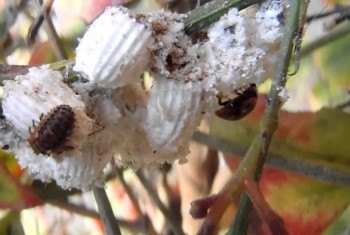
We can control them through predators and natural parasitoids of mealybugs such as Criptolaemus monteuzieri, Anagyrus pseudococci or Leptomastix algirica.In addition, we can apply color traps or ecological products such as potassium soap or neem oil.
Red spider on rosemary leaves
Although it is known as a red spider, it is a kind of mite. They are usually generalists and mainly affect vines, horticultural or ornamental crops. They are located on the underside of the leaves and are identified by having dark spots on the sides and a large number of silks.
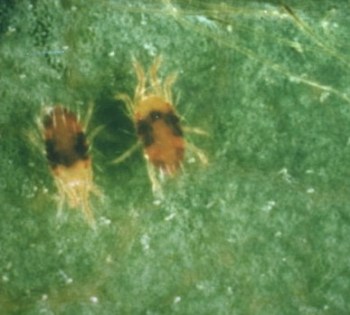
I leave you a link where we explain how to control the red spider.
Does rosemary repel garden insects?
The smell of rosemary is also not pleasant for some insect pests. We can take that into account for association crops in the orchard. The association of crops is one of the most used techniques in organic farming. It consists of strategically placing nearby plants due to their compatibility or benefits over each other. An example is rosemary which, thanks to its smell, repels some garden pests, such as thrips.
Therefore, a good association of rosemary is with plants attacked by pests that it can repel, for example:
- With CARROTS. Useful association because it drives away the carrot fly and thrips, typical pests of this crop.
- With BEANS. The smell of rosemary does not like the plague of the Chrysomela of the bean.
References
- Novak, J. (2018). The European Herb Growers Association (EUROPAM) position on drying (dehydration) factors for medicinal and aromatic plants (MAPs). Journal of Applied Research on Medicinal and Aromatic Plants,11, 1-2.
- Patriarca, A., Fernández, V. (2018) Alternaria. Reference Module in Food Science, Elsevier.
- D’Hooghe, P., Diaz, D., Brunel-Muguet, S., Davy, M., Vial, F., Dubois, J., Kauffmann, F. (2018).Spatial variation of root yield within cultivated carrot fields is strongly impacted by plant spacing. Scientia Horticulturae, 241, 29-40.
If you liked this article, you can take a look at other related articles such as: how to grow rosemary at home and how to make rosemary tea.
Have a nice day!


![Photo of Rockery: [Cultivation, Irrigation, Associations, Pests and Diseases]](https://www.complete-gardening.com/wp-content/uploads/2022/08/rockery-cultivation-irrigation-associations-pests-and-diseases-390x220.jpg)
![Photo of Ants in the Garden: How to Fight Them [Complete Guide]](https://www.complete-gardening.com/wp-content/uploads/2022/08/ants-in-the-garden-how-to-fight-them-complete-guide-390x220.jpg)
